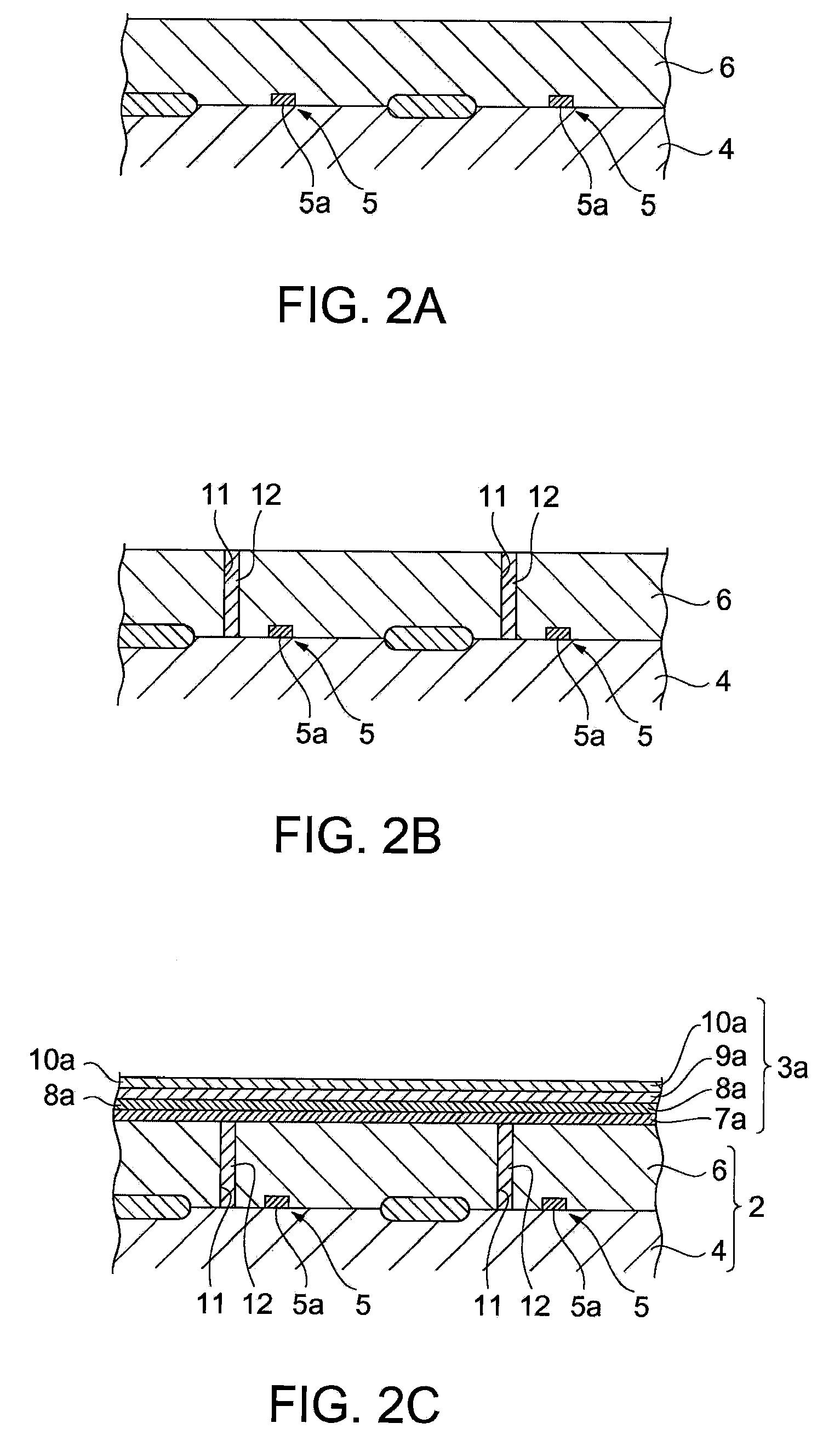Method for manufacturing ferroelectric memory device
a technology of ferroelectric memory and manufacturing method, which is applied in the direction of semiconductor devices, capacitors, electrical apparatus, etc., can solve the problems of difficult to obtain favorable ferroelectric characteristics, difficult to be patterned, and titanium oxides cannot be used as hard masks, etc., and achieves the effect of increasing resistance and electrical conductivity
- Summary
- Abstract
- Description
- Claims
- Application Information
AI Technical Summary
Benefits of technology
Problems solved by technology
Method used
Image
Examples
Embodiment Construction
[0025]Preferred embodiments of the invention are described in detail below. Prior to description of a method for manufacturing a ferroelectric memory device in accordance with an embodiment of the invention, an example of the ferroelectric memory device obtained by the method is described.
[0026]FIG. 1 is a cross-sectional view in part of a ferroelectric memory device in accordance with an embodiment of the invention. Reference numeral 1 in the figure denotes a ferroelectric memory device. The ferroelectric memory device 1 is of a stacked type having a 1T / 1C memory cell structure, and is equipped with a base substrate 2, and a plurality of ferroelectric capacitors 3 provided on the base substrate 2.
[0027]The base substrate 2 is formed from a silicon substrate (i.e., a semiconductor substrate) 4. Transistors 5 for driving the ferroelectric capacitors 4 are formed on a top surface portion of the silicon substrate 4, and a base dielectric film 6 that covers the driving transistors 5 is ...
PUM
| Property | Measurement | Unit |
|---|---|---|
| temperature | aaaaa | aaaaa |
| temperature | aaaaa | aaaaa |
| thickness | aaaaa | aaaaa |
Abstract
Description
Claims
Application Information
 Login to View More
Login to View More - R&D
- Intellectual Property
- Life Sciences
- Materials
- Tech Scout
- Unparalleled Data Quality
- Higher Quality Content
- 60% Fewer Hallucinations
Browse by: Latest US Patents, China's latest patents, Technical Efficacy Thesaurus, Application Domain, Technology Topic, Popular Technical Reports.
© 2025 PatSnap. All rights reserved.Legal|Privacy policy|Modern Slavery Act Transparency Statement|Sitemap|About US| Contact US: help@patsnap.com



